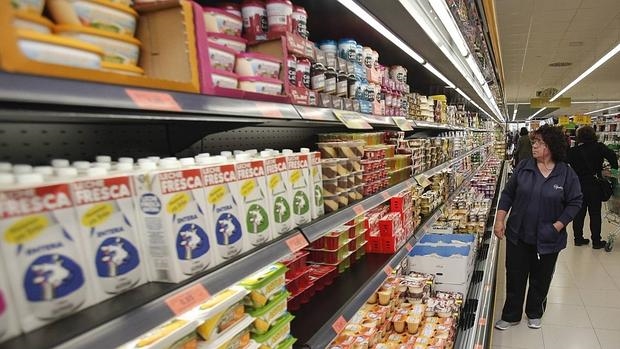Spaniards spend more but consume less fresh produce
Spanish consumers spent a total of €10.29 billion on fruits and vegetables in 2018. That is 7.3% more than in 2017. According to Nielsen’s head of business development, Ricardo Alcon, speaking at the AECOC Fruit and Vegetable Congress in Valencia, this increase is largely due to the 8% rise in the price of fruit and 12% hike in the price of vegetables. The importance of the fruit and vegetable segment is evident in the fact that it accounts for one out of every three new products of large consumption and 13% of total spending. “Much of the growth in the sector derives from convenience products, which contribute 10% of the growth in fruits. Bananas and apples combined represent almost a third of the total increase in this category,” said Alcón. The same applies to vegetables, with 20% of the increased expenditure accounted for by convenience products. Data from the AECOC ShopperView platform about Spaniards’ shopping habits indicates that the Spanish consumer buys fruits and vegetables on average twice per week, and 46% of them have increased their expenditure on this segment in recent years.
Increase in prices of fresh fruit and vegetables
|
Spending |
Volume Consumed |
Shopping Basket Value |
|
|
Fruit |
+6.1% |
-1.6% |
+7.9% |
|
Vegetables |
+8.7% |
-2.8% |
+11.9% |
Source: Nielsen
Consumers seek more added value
Despite the higher spending, consumption in volume terms has dropped by 2.8% in the case of vegetables and by 1.6% in the case of fruit. Consumers are purchasing products with more added value and, therefore, higher prices. Guiding them are three main points: health, convenience and pleasure. The quick pace of modern life is the main reason why only half of Spaniards consume 1.7 pieces of fruit and vegetables on average every day, very far from the 5 pieces a day recommended for a healthy life. This shows the great potential for growth still present in this market. The key will be to increase the frequency of consumption, perhaps by not seeing fruit only as a dessert, but also as breakfast, lunch or a snack. This requires more convenient “on the go” products.
The quest for sustainability
The search for healthy products is most noticeable in the organic and eco-friendly segments, which have grown substantially. Around 20% of the growth in this segment is accounted for by strawberries, cherimoya, mango and cherries, while 17% corresponds to kiwi and avocado. 45% of Spanish consumers choose local products, 39% want environmentally friendly products, and 31% demand more affordable organic products. What should attract producers is the fact that 57% of consumers would be willing to pay more for environmentally friendly fruit and vegetable containers.
Consumers fond of traditional fruit and veg stores
While large-scale retailers generate the highest sales volumes, their approval ratings are not high among consumers. Traditional fruit and veg stores are the ones that enjoy the highest customer satisfaction ratings. Nevertheless, around 52% of Spanish consumers buy their fruit and vegetables at hypermarkets or supermarkets, while only 39% shop at traditional stores, and 8% purchase them online.



